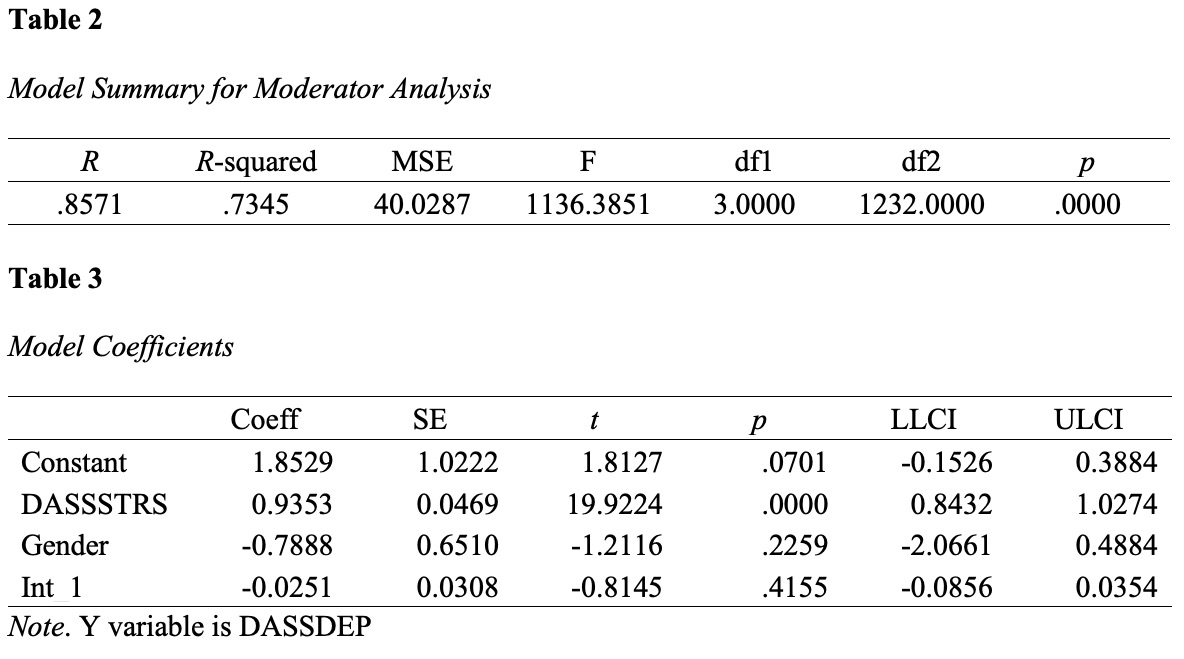The Poster: Draft Assignment is the penultimate assignment in the course, preparing you for the Poster: Final Assignment. The two assignments are identical in that you will prepare a poster presentation of your selected topic (see aTopic 2 Quiz: Pick Topic assignment), including a statistical analysis based upon the EDCO 745 course dataset (Topic 7 Regression Data: Output and Write-up). The draft assignment is your opportunity to prepare the assignment and received feedback from which you will make the appropriate revisions and resubmit as the Poster: Final Assignment.
A poster is used at academic and professional conferences to present one’s research in a brief and informative manner. The poster introduces the background of the problem, identifies the research question and hypotheses to be addressed, describes the variables and instruments used, and presents the descriptive statistics about the sample. The poster then transitions into showing the data analysis by presenting the methods used (also called procedures), presenting the statistical analysis, and offering the results from the analysis. The poster concludes by interpreting those results within the context of the literature and theory.
Within the Topic 7 and Topic 8 assignments, you will develop a poster based upon the work you have done throughout the EDCO 745 course. The good news about the poster assignment is that if you have been diligently following along with this blog, you have already done the hard work for this assignment. All you will need are your Week 4 Literature Review and Week 7 Regression Data Output and Write-up assignments.
The following provides a step-by-step guide for compiling the material needed to complete the poster assignment. The sections described are based upon the poster template, which may be downloaded at the end this blog, which is a modified version of one of the EDCO 745 Templates (Template 1). An example of the completed assignment is also available. Be sure to review the guidance and instructions prior to developing your poster.
Introduction
The introduction provides a background to the research topic and develops the need for further research. This section is a miniature version of the Literature Review’s Synthesis and Conclusion sections in which you provided a review of the literature and its findings about your topic and a statement of what still needs to be studied based upon that review. To complete this section, copy and paste the Synthesis and Conclusion from the Topic 4 Literature Review, making sure you apply any feedback received on the assignment. Once you have done this, you will need to pare down the material to present only what is necessary to introduce the topic and describe the research problem to be investigated. The text should fit within the available space without adjusting the font size. The last sentence of the section should be a statement of the research problem, which can be found at the top of the Topic 7 Regression Data: Output and Write-up assignment. Please ensure this sentence aligns with the research questions and hypotheses (and the subsequent statistical analysis) that you select.
Research Questions & Hypotheses
The purpose of the rest of the poster is to address the research problem developed in the Introduction. The process begins with proposing a research question and hypothesis that will answer the research problem. For this assignment, you only need one research question and the associated hypotheses. Assuming that you followed this blog to reach this point, you will have completed the Topic 7 assignment Regression Data: Output and Write-up Assignment in which you completed a moderator analysis. The first steps of the assignment were to identify the problem statement, which should be the last sentence of the Introduction, the research question, and the hypotheses. If you did this, you should copy and paste the research question and hypotheses into the section and you are done!
Example:
RQ: To what extent, if any, does gender moderate the predictive effect between Stress (X) and Depression (Y)?
H0: Gender does not significantly moderate the predictive effect between Stress (X) and Depression (Y).
H1: Gender significantly moderates the predictive effect between Stress (X) and Depression (Y).
Sample
The sample section describes the participants of the study from whom data were collected. Descriptions of the sample include how many total participants were in the study and listing of the relevant characteristics. For example, if the sample was 1,300 of which 704 were male and 596 were female, then one would describe the sample size and present a frequency table of the genders. One may use a bar chart to visually present the information; however, keep in mind the frequency values (the numbers for each category) must still be presented.
Example
The sample for the study consisted of records aggregated in the EDCO 745 dataset (N = 1,300), differentiated by gender of male (n = 704) and female (n = 596), as presented in Table 1.

Variables
In any research presentation, one must present the variables that are being examined. One must identify the variables, describe how the variables were measured, and describe the level of measurement for each variable. Identify the role of each variable in the study. A simple format for this was described in Week 2: Quiz: Pick Topic Assignment. If using the analysis from the Week 7 Regression Data Output and Write-up assignment, you should be able to copy and paste directly from the previous work.
Example
Gender, as self-identified, a categorical-nominal level of measurement. Gender is the moderator (W) variable.
Stress, as measured by DASS-Stress, a continuous-interval level of measurement. Stress is the predictor (X) variable.
Depression, as measured by DASS-Depression, a continuous-interval level of measurement. Depression is the criterion (Y) variable.
Procedure
Once the questions are set, the variables identified, and the sample selected, the next step is to describe how the test will be completed. As a presentation, the procedures are intended to give an overview of the important steps one completes to prepare the data and test the hypothesis, keeping in mind the important part of testing the hypothesis is, well, testing the hypothesis. Although the course spends time on ensuring the data are prepared and appropriate for hypothesis, such data preparation is not the main part of an analysis. As such, it is adequate to describe that data were retrieved and tests of assumptions were completed. The reader will expect that tests of assumptions met the assumptions unless you describe otherwise. For example, if there was a minor deviation of normality, then one would describe it and address how that deviation was handled. Otherwise, the adage of no news is good news is applicable. With the data prepared, one should then describe how the data were used to test the hypothesis. The writeup for this section may be copied directly from the writeup for the Week 7 Regression Data Output and Write-up assignment with some minor editing.
Example
A simple moderator analysis using Hayes (2018) model 1 was completed using the variables gender as the moderator (W), Stress as the predictor (X) and Depression as the criterion (Y) obtained from the EDCO 745 course dataset. The data were screened and tests of assumptions for multiple regression were completed. Although there was a minor deviation from normality for the residuals, the data were not transformed. Violation of the normality of residuals does not lead to issues with significance testing, particularly with larger sample sizes, and does not suggest any discrepancies with model coefficients should be anticipated. Instead, this violation may be an indication that a better regression model may be needed (Cohen et al., 2003). The tests of assumptions demonstrated the data are suitable for conducting the moderator analysis.
The research question was addressed by testing the null hypothesis. The relationships examined are presented in Figure 1.

Results
With the procedures in place, the next step is to describe the outcome of the tests. As with all scholarly writing, one begins with a narrative description of the results, then one presents the figures and/or tables that support the results. The write up for the results often tend to be very brief, as one is only presenting the outcome of the statistical test—the interpretation comes later in the Discussion section. If you are using the Week 7 assignment, you may copy and paste directly from it into this section.
Example
A moderator analysis using PROCESS (v.4.0; Hayes, 2018) was conducted to test the null hypothesis. There was a significant predictive effect between Stress and Depression, t = 19.9224, p < .001, b = 0.9353. The result of the interaction effect between gender and Stress upon Depression was not statistically significant, t = -0.8145, p = .4155, b = -0.0251. See Tables 2 and 3. The results failed to reject the null hypotheses, which stated that gender does not significantly moderate the predictive effect between Stress (X) and Depression (Y). The results suggest that although there is a significant predictive effect between Stress and Depression, the extent of the effect between Stress and Depression is not dependent upon one’s gender, as shown in Figure 2.


Discussion
The discussion section presents the opportunity to interpret the results in the context of the literature and the theoretical foundations. For the purposes of the assignment, one should describe how the results of the analysis fill the need for further research and compare these results to the results of the reviewed literature. Only a few sentences are needed for this assignment. There is no expectation for contrasting the results within the theoretical foundations for this assignment. The discussion should also incorporate a description of the limitations of the study and should provide direction for future research.
Example
The predictive effect, as presented by Smith (xxxx) and Brown (xxxx) were observed within this study’s results, as well. However, unlike the results demonstrated by Jones (xxxx), which suggested that gender may be a moderating factor between stress and depression, the results of this study demonstrated gender does not moderate the predictive effect between stress and depression.
The limitations of this study include using an archival dataset, which may have been developed using a different theoretical foundation or study purpose. Additionally, the conclusions are limited by the unknown validity or reliability of the data collection efforts in developing the archival data.
Future research should consider collecting primary data directly from participants. Considerations should be given to ensuring a representative sample or, alternatively, by focusing upon specific groups (e.g., doctoral students, 18-35 year old participants, etc.)
References
Within this section, one should list the references for any citations within the presentation. Typically, one would have citations in the Introduction, Variables, Procedures, and Discussion. Be sure to use proper APA format.
Example
Hayes, A. F. (2018). Moderation, mediation, and conditional process analysis: A regression-based approach (2nd ed.). Guilford Press.
Final thoughts
The poster assignment is a presentation of research already conducted. As such, it should be a well-developed, visually appealing presentation of a research problem and how it was addressed. Use the same font and font size throughout, keep figures and tables legible, and focus on what is important: the results of the analysis and the interpretation of those results. A poster presentation is not a dissertation. It is meant to be read in 5-10 minutes to inform the reader about the study. If the reader wants to learn more about it, they will read the published research from which the poster was developed. In this class, your version of the published research is the aggregation of your work: The literature review and the appropriate analysis output and writeup.

